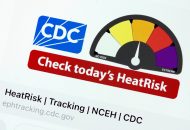How Income Volatility Impacts Health Decisions

This week the Centers for Disease Control and Prevention National Center for Health Statistics released data that the U.S. birth rate is the lowest it’s been since 1979, and one theory on why this is happening is younger individuals who are of childbearing-age are putting off or deciding to not have children because of the expense.
Delaying health decisions, like family planning, because of income volatility is proving to be the status-quo for many Americans. A recent study from Mina Addo, a research fellow in Social Policy and Practice at the University of Pennsylvania and Lisa Servon, chair of the City and Regional Planning Department at the University of Pennsylvania,
shows income volatility can have a direct impact on health care decision-making.
“When people are just delaying or skipping care there are implications to health and the quality of life that comes with not feeling well, and not feeling like you can seek treatment,” said Addo.
The study, conducted during the pandemic, consisted of 33 in-depth interviews about health care spending and income of working adults aged 27-55, in which 79% were females holding a four-year bachelor’s degree, and 70% of whom were non-White.
“The big eye opener is that this is a middle-income population that has done ‘the right things,’ or that pathway of what used to be the American Dream, and we need to think if that’s still possible, and what allowed that to exist before,” Addo said.
Since the 1970s, there has been a rise in income volatility from declines in economic security, such as stagnant wages, or an erosion of benefits from private sector jobs.
Currently, roughly one-third of U.S. households experience month-to-month income volatility, according to data from a Household Well-Being Survey from the Federal Reserve.
Most of the study population had a median household income of $60,000, and nearly 90% had health insurance plans, with three quarters on employer-sponsored plans.
Although most of the study population had full time jobs, researchers found that more than half depended on multiple income sources to make ends meet, and that it was the “second job that introduces volatility.”
Even in cases where an individual had a full-time job and a part-time job, such as driving Uber to bring in extra money, they found they still did not have enough income stability to effectively manage their health.
“We really did have, through the American Rescue Plan, as well as stimulus packages, a peek into whether income stability through the form of one-time checks could give people confidence. Feeling like people could put food on the table, maybe yes, but feeling like they could make decisions about health care to get essential health services, like screening exams, we did not have that kind of stability for people to feel like their health care was a priority,” said Kavita Patel, a non-resident fellow in economic studies at USC-Brookings Schaeffer Initiative for Health Policy.
“People tend to blame themselves for not having the financial stability, but the game has really changed, and they don’t know that if they had this job 40 years ago, they would have had better insurance through their employer,” said Servon.
Individuals in the study were able to afford to go to their primary care doctor, but researchers found in most cases they were not able to afford non-primary care for things such as diabetes management, dental work, treating a serious injury or medical incident, diagnostic tests, and mental health services.
“Think of it as someone who doesn’t get their wisdom teeth pulled because they have no money in moment, and 10 years later, they develop a cyst that may be tumor, there is a lot of the confusion around how much things might cost,” said Servon
The ability of the study population to financially plan for the costs of non-primary care, or for treating unexpected injuries, is complicated by insurance companies, who often do not make the cost of treatments transparent.
“Where the insurance should be taking the risk and uncertainty out of people’s equations, it was adding it in many situations because they weren’t sure what would be paid for, and that was a deterrent in getting the care they needed,” said Servon.
A slate of regulations from the Trump Administration aimed to increase pricing transparency for medical services, by requiring hospitals to make publicly available a “chargemaster list” of the cost of all services offered, so that anyone can look up, for example, what a C-section should cost at a particular hospital.
“The Recovery Act did include a provision that improves the subsidies for people buying care through the health care marketplaces, so perhaps people can get plans that do cover more, and not rely on the high deductible plans, but we need to get to a place where everyone is covered,” said Addo.
“In 2022, we are going to see a set of requirements in place for insurance companies to be transparent about what they are paying for services, ” said Patel.
Patel, who believes that a “Medicare-for-all” or public option is needed, previously worked under Sen. Edward Kennedy as a supporter for a bill which would have allowed adults to buy into the Medicare program.
However, Patel said, “the bill went nowhere every year,” but is now, “coming back” as senators have introduced bills, such as the Medicare 50 Act, to lower the Medicare eligibility age.
“How do you take these qualitative and quantitative findings and think about policy after we have just gone through the worst pandemic, and close to a Depression, with 40,000 children who lost a parent, and six out of 10 women displaced in the workplace. It’s a reminder of how integrative our systems are,” said Patel.
“For many people, they are that one emergency away from being low-income and not having any resources or safety net to support them, and let’s not wait until that happens,” said Addo.

























